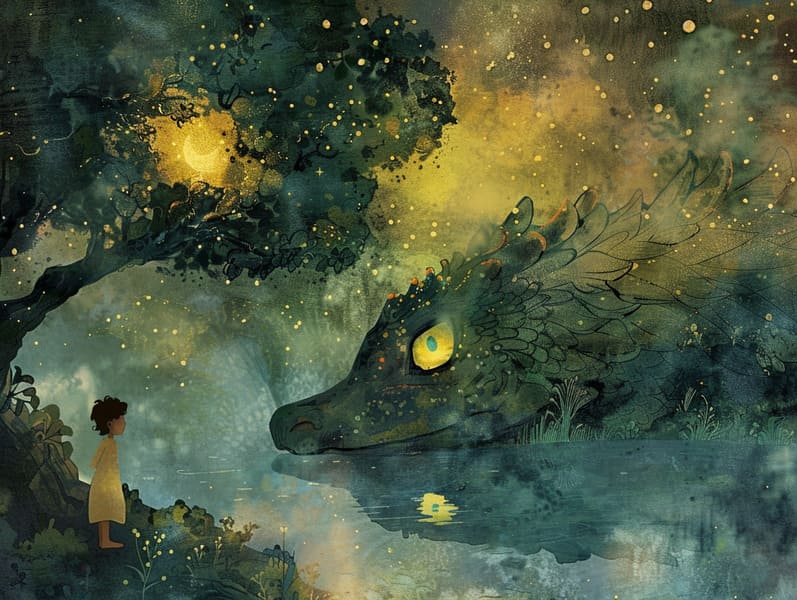
Children's fairy tales have ancient roots. These narratives have been shared from one generation to the next millennia before they were ever written down. They developed from a variety of societies, including Western traditions. They were initially passed along among grown-ups, often carrying themes and messages concerning the societal norms and beliefs of the time.
Jacob and Wilhelm Grimm, Jacob and Wilhelm (the Grimm brothers), were among the first to gather many of these beloved stories. Their anthology, "Grimm's Folk Tales," included tales like "The Story of Cinderella," "Hansel and Gretel," and "Snow White," which have since become essentials in the world of beloved fairy tales. Similarly, the Danish author's imaginative stories, such as "The Little Mermaid," and "The Duckling's Story," have captivated hearts worldwide, solidifying their place in the pantheon of famous fairy tales.
Though they are old, fairy tales remain as significant as ever, especially as children's bedtime stories. These delightful tales are now available in diverse formats, including colorful picture books, charming animations, and free fairy tales online.
Their lasting appeal can be connected to several captivating elements:
Crucial Morals: Ancient fairy tales often impart important moral lessons. Stories like "The Shepherd Boy and the Wolf" teach the significance of truth, while "The Story of the Tortoise and the Hare" highlight the virtues of perseverance and meekness. These tales offer the young clear distinctions between moral and immoral, developing their moral compass in a tender yet important way.
Sympathy and Perception: Ancient fairy tales frequently depict individuals facing trials and tribulations, inciting children to sympathize with their struggles and back their triumphs. For instance, "Beauty and the Beast" teaches us the merit of valuing inner qualities to perceive the real character of a being, nurturing kindness and perception.
Cultural Comprehension: Many classic fairy tales are rich in the cultural contexts from which they came. Engaging with these fairy tales can provide informative snapshots into different beliefs, building a sense of cultural awareness and recognition.
Inventiveness and Fantasy: The enchanted elements in fairy tales—talking animals—spark children’s visions and dreams. These stories take readers to fantastical realms, generating inventive ideas and a sense of enchantment that endures a lifetime.
Traditional fairy tales are not only charming but also illuminating. They act as entrancing tools in strengthening various thinking and feeling skills in young ones. When old fairy tales are spoken out loud, they strengthen communication skills by offering new words and detailed sentence structures. This practice also promotes auditory perception and attention span, as young ones hang on every word, anxious to see what happens next.
Furthermore, contemplating the themes and characters of old fairy tales can promote problem-solving abilities and intellectual skills. Little ones are led to see patterns, predict happenings, and catch on to cause and effect. These reflections also assist little ones convey their thoughts and feelings, boosting their emotional intelligence.
In today’s technological era, the abundance of internet fairy tales has made these tales more acquirable than ever. Web platforms and web apps present comprehensive collections of famous fairy tales that can be accessed or listened via anytime, anywhere. Fairy tales told out loud are particularly prevalent, extending an interactive method for children to enjoy these whimsical stories. Audio stories and spoken videos lead characters and settings to life, often augmented by mesmerizing harmonies and tunes that boost the tale experience.
The timeless appeal of ancient fairy tales lies in their ability to evolve to new eras while keeping their fundamental ideas. Contemporary updates of these tales often present more inclusive figures and modern settings, making them meaningful to today’s audience. However, the basic principles of courage, empathy, and truth remain unchanged, continuing to strike a chord with young readers of all ages.
Traditional fairy tales also offer a sense of calm and knowability. They grant access to a coherent narrative with a clear beginning, middle, and end, often wrapping up with the culmination of conflicts awesome site and the triumph of morality over immorality. This predictability can be soothing for young readers, furnishing a sense of steadfastness in an ever-changing world.
Ancient fairy tales continue to captivate and instruct new generations, maintaining their charm and significance in modern society. As kids' bedtime tales, they bring a perfect blend of allure and teaching, supporting moral values, empathy, and creativity. The abundance of online fairy tales and the widespread nature of fairy tales read aloud assure that these timeless tales remain available to new generations.
By upholding and spreading these narratives, we continue to pay tribute to the rich tapestry of human imagination and cultural heritage. Whether you are browsing a vividly illustrated book, exploring a electronic collection, or listening to an sound book, the fascination of bedtime fairy tales is always within reach. These fairy tales point out of the eternal presence of fairy tales and its ability to bind us across epochs and places.
Regardless if you are reading a gorgeously illustrated book, accessing a web-based collection, or listening via an read-aloud book, the spell of popular fairy tales is always within reach.
These tales highlight of the perpetual ability of narratives and its ability to draw us together across epochs and places, casting a charm that delights and instructs alike.